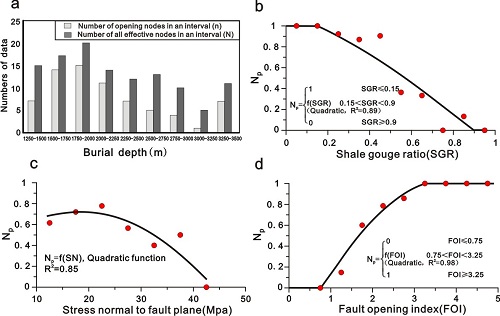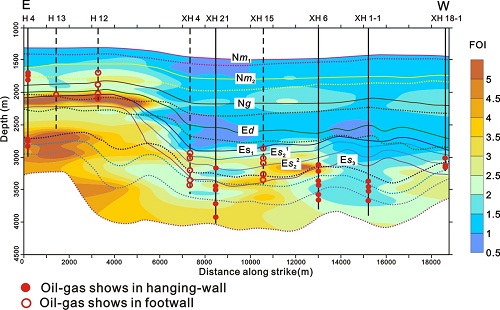Postdoctor ZHANG Likuan and his teacher LUO Xiaorong evaluate geological factors in characterizing fault connectivity during hydrocarbon migration. The study focuses on the Chengbei Step-Fault Area in the Qikou Depression, Bohai Bay Basin, NE China,
An index, the fault-connectivity probability (Np), is proposed to evaluate the possibility that a fault has been once serving as a migration pathway. The statistical relationship between Np and any a geological parameter may be used to indicate the effectiveness of this parameter in characterizing the connectivity of a fault during hydrocarbon migration. The correlation coefficient of a relationship is a good indicator of the effectiveness; and the results are generally in agreement with qualitative assessments. Parameters representing a single geological factor are generally ineffective, whereas those representing implicitly or explicitly two or more factors, such as shale gouge ratio, stress normal to the fault plane, and fault opening index, are more effective.

Figure 1 (a) Histogram of the number of opening nodes and the number of all effective nodes on all fault planes in the study area tabulated for individual intervals of buried depth,. Relationships between fault-connectivity probability Np and composite parameters of shale gouge ratio (SGR) (b), stress normal to the fault plane (SN) (c), and fault opening index (FOI) (d). The statistically significant relationships indicate that these composite parameters are effective indicators of fault connectivity for hydrocarbon migration. (Image by ZHANG)

Figure 2 Distribution of FOI on the plane of Fault ZDH4 projected onto a vertical plane. (Image by ZHANG)
Zhang et al. Evaluation of geological factors in characterizing fault connectivity during hydrocarbon migration: Application to the Bohai Bay Basin. Marine and petroleum Geology, 2011, 28(9): 1634-1647(Download Here)